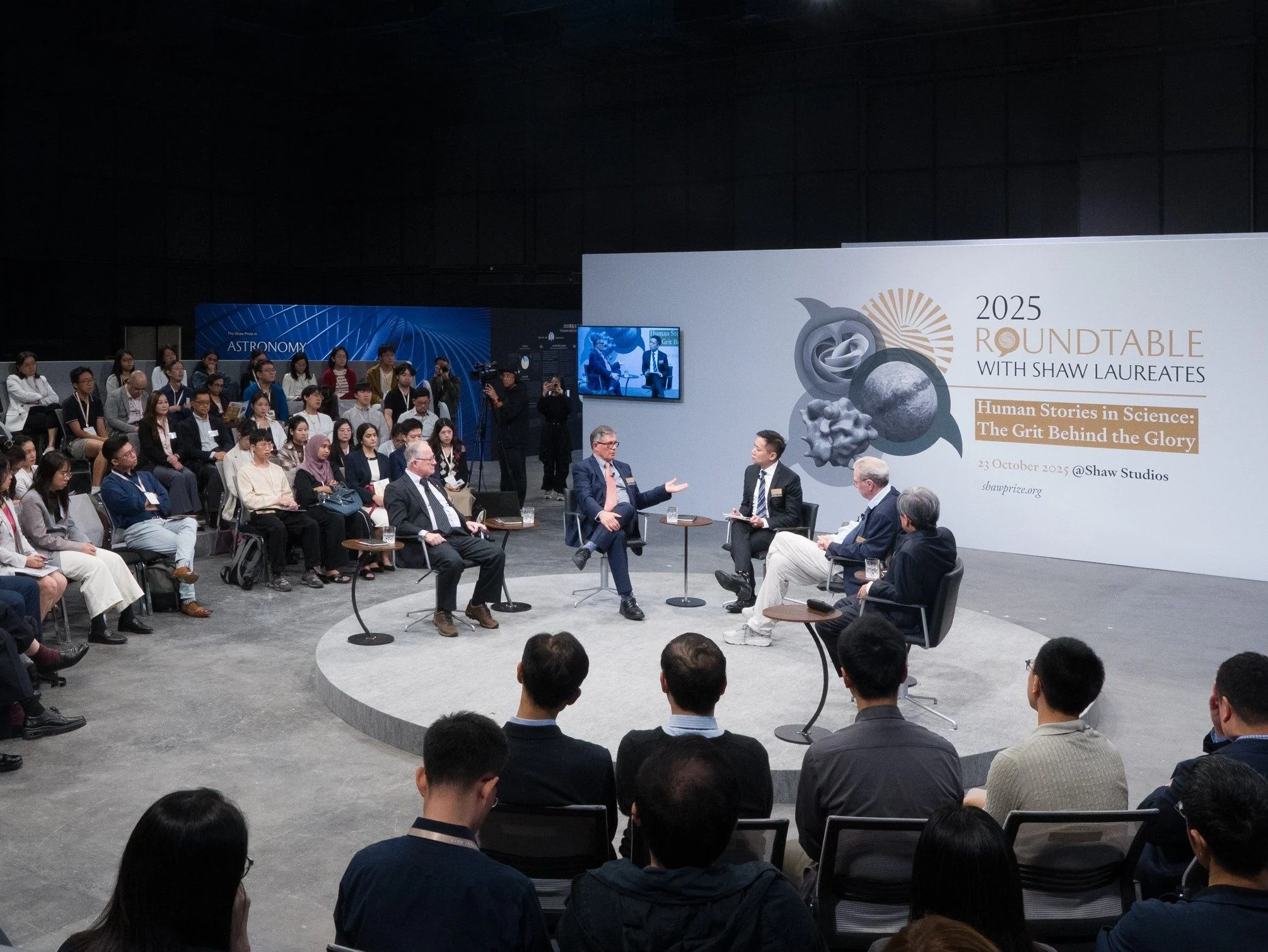Copyright scmp

Groundbreaking advances in diverse fields of scientific research can have a profound impact by bringing new understanding, insight and hope to people all around the world. With that in mind, the prestigious Shaw Prize was designed to recognise the achievements and critical role that scientists play in unlocking the complexities of nature and the mysteries of the universe. Launched in 2002 by the late Hong Kong-based film mogul and philanthropist Sir Run Run Shaw, and first presented in 2004, there are three distinct awards in the fields of astronomy, life science and medicine, and mathematical sciences – each to the value of US$1.2 million. Four new laureates were honoured at this year’s glittering award presentation ceremony, held last Tuesday, at the Grand Hall of the Hong Kong Convention and Exhibition Centre. The 2025 Shaw Prize in Astronomy was shared by John Richard Bond from Canada and George Efstathiou from Britain, both of whom are distinguished astrophysicists and cosmologists. Wolfgang Baumeister, a structural biologist and biophysicist from Germany, received the Shaw Prize in Life Science and Medicine while Japanese mathematician Kenji Fukaya won the Shaw Prize in Mathematical Sciences. Subsequently, last Thursday, the laureates took part in a round-table discussion where they shared personal experiences, reminiscences and words of advice under the general theme of “human stories in science”. This was an ideal opportunity for them to talk about the motivations and moments that ignited the spark and later came to define their individual journeys of scientific discovery. The occasion allowed each of the laureates to reflect on “the grit behind the glory”, most notably how they were able to overcome the inevitable obstacles encountered along the way, whether down to technical limitations, initial misconceptions, funding struggles, or scepticism expressed by others. Their experiences underscore the importance of resilience and innovative thinking when facing challenges, the benefits of collaboration with colleagues and mentors, plus the spur provided by competition within the field. At the event, the four laureates highlighted the need for perseverance in achieving success and how emerging technologies are radically reshaping the way researchers around the world go about their work. For instance, Bond, who is a professor at the Canadian Institute for Theoretical Astrophysics and at the University of Toronto, explained how cosmology has undergone a revolution over the past two decades. Sharing the Shaw Prize in Astronomy with Efstathiou, emeritus professor of astrophysics at Cambridge University in the United Kingdom, their pioneering work has focused on studies of the fluctuations in the cosmic microwave background, a relic of the early universe. This has led to more precise knowledge about the age, geometry and mass-energy content of the universe. These advances are based on increasingly precise measurements by ground-, balloon- and space-based instruments used to record the “angular power spectrum” of small fluctuations in temperature and polarisation of radiation left over from the Big Bang. The information has served to verify the laureates’ predictions while also testing many aspects of fundamental physics, providing new insights into the nature of dark matter and dark energy, and measuring key cosmological parameters with a previously unimagined degree of accuracy. Bond said the most challenging aspect of achieving scientific breakthroughs was the process of analysing the research, debugging, identifying the right and wrong paths, and following the correct one. “Technologies like artificial intelligence have made it easier to do this, but back when we were doing our work, we could only rely on our own intuition and an absolute focus to ensure the computational engines were producing the right results,” he said. “Computing has advanced so much and is now absolutely essential to everything we do. We were fortunate to be in a period of great discovery, and though it is harder now to make new breakthroughs, we are still asking the biggest questions that humans can ask. That fuels the excitement, which you see among young people and the general public, about the most anticipated stories in science.” Meanwhile, Efstathiou is a leader in the study of the clustering and evolution of galaxies and spearheaded the first automated survey of galaxy clustering. He was also an early advocate of a universe whose mass-energy was dominated by dark energy. In one early survey involving four to five million galaxies, the results disagreed with his hypothesis, which caused Efstathiou and his team to spend more than a year scrutinising the analysis. They still decided to publish their survey despite the negative results. “It took a number of years before our explanation was accepted, and the community agreed that there was an additional component to the universe, which has now become our standard model of cosmology,” Efstathiou said. “I am particularly proud of that work because we did not give up. We were honest and published our results, and it turned out to be right.” Baumeister, as winner of the Shaw Prize in Life Science and Medicine, was commended for his pioneering work in the development and use of cryogenic-electron tomography (cryo-ET). This imaging technique enables the three-dimensional visualisation of biological samples, including proteins and cellular compartments in their natural settings in an intact cell. That makes it possible to study the biocomponents that work separately or together to keep cells alive and to decipher their functions in health and disease. Greater understanding of their structure, location and interactions of macromolecular complexes within cells is important for gaining insights into the dynamics between viruses and host cell membranes, which is vital for the further development of vaccines and antibodies. Unsurprisingly, Baumeister and his team had to overcome numerous challenges, from first identifying the position of macromolecular complexes in the human body to time-consuming data collection and achieving accurate analysis. The outcomes, though, have been more than impressive. “One form of scepticism was from people who didn’t understand what we hoped to get out of the work we were doing,” said Baumeister, who is director emeritus and scientific member of the Max Planck Institute of Biochemistry in Germany and adjunct professor at ShanghaiTech University in China, during the round-table event. “But it was always clear to me that if you can get the molecular architecture of the cell in atomic detail, then you will get a very good framework for understanding the inner workings of cells. The value of that knowledge was pretty clear. Another line of argument was about the feasibility due to the radiation sensitivity of biological materials embedded in ice.” About 15 years ago, Baumeister and his team began exploring with the use of focused ion beam (FIB) milling to open a sort of transparent window into the cell samples. They also spent 20 years developing template matching – a computational method which enables researchers to locate and identify the positions and orientations of macromolecular complexes within crowded cellular environments. This helped to enhance the accuracy and automation of cryo-ET. The use of FIB milling also enabled them to “apply cryo-ET analysis to thicker cell samples, not just thin specimens such as viruses, bacteria and yeast”, he said. “We never lost confidence in what we were doing. There wasn’t one single major breakthrough, but we made steady progress along the way and were clearly moving forward with every milestone.” Fukaya, winner of the Shaw Prize in Mathematical Sciences, stood out for his work on symplectic geometry, which measures and studies the oriented area of even-dimensional spaces and has applications in physics and mathematics. He also envisioned the existence of what is now named the Fukaya category, which provides a way to better understand the points of intersections of sub-manifolds. In collaboration with colleagues, Fukaya has made breakthrough contributions in the areas of symplectic topology, mirror symmetry and gauge theory, which took forward the work of other noted scholars in the fields of classical mechanics and physical systems. “It took more than 10 years’ research for the project to take on a shape that people could understand after it had started as some kind of dream back in the 1990s,” he said during an interview before the event. Fukaya, a professor at the Beijing Institute of Mathematical Sciences and Applications and at the Yau Mathematical Sciences Center at Tsinghua University, added: “You have to find a balance between a concept, something that goes into the far future, and realising what is basic and logical as you use the foundational things in mathematics to go step by step in your work.” Learn more about the Shaw Prize and the winners’ research discoveries at shawprize.org



